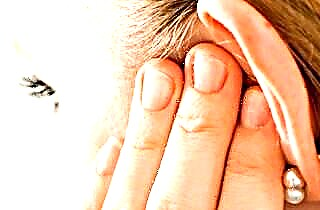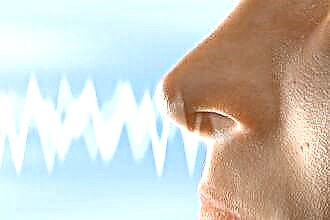A smear for the study of the cellular composition on the mucous membrane of the oropharynx allows you to confirm the presence of pathogens. Based on the results of the analysis, the doctor diagnoses the disease, prescribes medicines to combat the pathogen.
 One of the most commonly performed tests is a throat swab for staphylococcus aureus.
One of the most commonly performed tests is a throat swab for staphylococcus aureus.
The analysis is assigned:
- with a preventive purpose before employment in the food industry, educational and medical institutions. Based on the results, it is determined whether the person is healthy, whether it is possible to start work.
- pregnant women to establish the risk of developing severe infectious diseases that can complicate the course of pregnancy and have a negative effect on the fetus.
- for a preventive examination of a child before visiting an educational institution in order to avoid the development of an epidemic of an infectious disease in the children's team.
- examination of the patient before hospitalization, as well as before surgery, since pathogenic microorganisms can significantly complicate the course of the postoperative period and slow down the healing process.
- establishing the risk of developing the disease after contact with a sick person, which makes it possible to prevent further spread of the infection.
- for the diagnosis of ENT diseases, determination of the type of microflora, on the basis of which it is possible to choose the right medicines.
Preparing for diagnosis
Reliable research results can be obtained only if certain rules are followed. The patient needs to start preparing for the analysis a few days in advance. A throat swab will show the true qualitative and quantitative composition of microorganisms under certain conditions:
- 4 days before the analysis, it is forbidden to use antiseptic solutions for rinsing the oropharynx, as well as ointments, sprays with antimicrobial action. They lead to the washing away of pathogenic microorganisms, reducing their number. Therefore, the survey results are not considered correct.
- 3 hours before the diagnosis, you should not eat, drink, chew gum.
- on the day of delivery of the material, you do not need to brush your teeth;
- antibacterial drugs for internal use are canceled one week before the examination.
Features of the procedure
 The patient is placed on the couch in a sitting position. The mouth must be opened as much as possible to clearly visualize the structures of the cavity. To improve the position, it is recommended to tilt your head back a little.
The patient is placed on the couch in a sitting position. The mouth must be opened as much as possible to clearly visualize the structures of the cavity. To improve the position, it is recommended to tilt your head back a little.
The specialist fixes the tongue with a spatula (metal, wooden), lowering it to the bottom of the mouth. A sterile cotton swab on an elongated metal loop should be passed over the mucous membrane of the pharynx.
The tampon should not come into contact with other surfaces during insertion and withdrawal from the oral cavity in order to avoid obtaining inaccurate data.
The process of collecting material does not cause painful sensations to the patient, only slight discomfort is possible. People with a pronounced gag reflex may experience discomfort when touching the posterior pharyngeal wall.
The collected material on a swab is placed in a sterile flask with a medium that provides the most favorable conditions for the preservation of pathogenic microbes. This makes it possible to transport the material to the laboratory without dead microorganisms.
Under laboratory conditions, the material is placed in nutrient media of various compositions to activate the processes of reproduction and growth of infectious pathogens. Depending on the reaction, which should be assessed after a certain period of time.
Analysis results
In order for a specialist to correctly decipher the results obtained, he uses tables of indicators of the normal quantitative and qualitative composition of the microflora of the mucous membrane of the oropharynx. The form indicates the type of microorganisms, their number, which is indicated in colony-forming units.
To determine CFU, a special nutrient medium is used, due to which the growth of a certain type of pathogenic pathogens is observed. Colonies of microbes grow in the form of spots. If necessary, new infectious agents can be grown from the colony.
At the next stage, microorganisms are counted using special techniques. In the case of serial dilution, the collected material is subjected to 10-fold dilution, after which it is placed in a second tube. Further, the diluted material with a volume of 10 ml is again diluted 10 times, and placed in a third test tube. The specialist repeats the manipulation about 10 times.
Part of the material from each tube is inoculated onto  nutrient medium. This is necessary to facilitate the growth of microbes. At the maximum concentration of pathogens, growth is practically absent. The interpretation of such an analysis is not considered reliable.
nutrient medium. This is necessary to facilitate the growth of microbes. At the maximum concentration of pathogens, growth is practically absent. The interpretation of such an analysis is not considered reliable.
The table indicates the type of infectious microorganisms, their number. Under normal conditions, epidermal, greening staphylococcal, pneumococcal microbes, a small part of Candida fungi, and non-pathogenic Neisseria can be found on the mucous membrane of the oropharynx.
Streptococci, fungi, Leffler's bacillus, the causative agent of whooping cough, and others can be detected from pathogenic microbes in smears.
Streptococci are the cause of many diseases, for example, tonsillitis, pneumonia, rheumatism, scarlet fever. Let us dwell on staphylococcal and diphtheria rods in more detail, since they are most often found in the material.
Staphylococcal pathogen
Often, staphylococcus in smears from the oropharynx is found after severe hypothermia, immunodeficiency against the background of vitamin deficiency, colds. Staphylococcus aureus refers to pathogens that are normally present in the microflora, but they do not cause disease. However, when exposed to factors favorable for them, they are activated. Staphylococci are transmitted through contaminated household items, and also enter the body through the respiratory system when the infection is inhaled. In rare cases, alimentary infection is recorded.
Do not be alarmed if staphylococcus is detected in a newborn, because the baby has a weak immune defense, and therefore has a high risk of infection.
The diagnostic complex includes obligatory sowing or bacterial analysis. Depending on the quantitative composition of the sown pathogen, the doctor decides on the appointment of drugs. Staphylococci provokes the development of:
- inflammation of the nasopharynx / oropharynx;
- food toxicoinfection;
- osteomyelitis;
- pneumonia;
- pyoderma.
Staphylococcus aureus can lead to sepsis, which critically aggravates the course of chronic diseases.
Staphylococcus aureus in a throat swab can be detected using a microscopic method by staining the material according to Gram. When diagnosed, cocci (spherical) are found singly or in clusters. Staphylococcus aureus turns blue. It is characterized by immobility and spherical shape. Microscopy is performed for preliminary diagnosis.
To determine the exact composition of the flora, a culture method is used. Inoculation of the material helps to develop a pure culture, which confirms the diagnosis and helps establish a response to antibiotics. The optimum temperature for bacterial growth is 30-36 degrees. Staphylococci are not whimsical to nutrient media, therefore, the growth of their colonies is possible on various media:
- meat-peptide agar, on which microbes grow in smooth and shiny round-shaped colonies, rising above the environment.Staphylococcus aureus has a golden coloration of the colonies, which is due to the presence of pigment. It is released during the growth of bacteria, which is why it got its name.
- meat-peptide broth. Staphylococcus aureus leads to its cloudiness and the formation of sediment at the bottom.
- Salt agar contains up to 10% sodium chloride. On this environment, only the staphylococcal pathogen grows, since other microorganisms cannot withstand such a high concentration of salts.
- blood agar. Around staphylococcal colonies, a hemolysis zone is observed, where destroyed erythrocytes are located under the action of hemolysin.
To determine the sensitivity of microbes to antibacterial drugs, an antibiogram is required. To do this, it is necessary to sow bacteria on a solid medium, after which disks soaked in various antibacterial agents are placed on its surface.
 If the growth of pathogenic microorganisms is inhibited under a specific antibiotic disc, its effectiveness in combating the pathogen is confirmed. As a result, the doctor chooses this drug for the treatment of the disease. In most cases, penicillins or vancomycin are prescribed to kill staphylococci.
If the growth of pathogenic microorganisms is inhibited under a specific antibiotic disc, its effectiveness in combating the pathogen is confirmed. As a result, the doctor chooses this drug for the treatment of the disease. In most cases, penicillins or vancomycin are prescribed to kill staphylococci.
Due to the long-term use of penicillins for the treatment of staphylococcal diseases, microbes have developed resistance. Antibiotic protection is provided by penicillinase, which breaks it down.
Bacillus Leffler
Diphtheria bacterium activation is suspected when:
- intoxication syndrome;
- an inflammatory focus in the oropharynx;
- breathing disorders, shortness of breath, asthma attacks;
- dysfunction of the kidneys;
- film plaque on the tonsils, nose;
- cardiac pathology.
Diphtheria is a serious disease that can be fatal if left untreated. Due to the high risk of developing severe complications, a vaccine was specially developed. The first vaccination is carried out at 3 months of age, after which it is required to re-dose twice after 6 weeks. Revaccination is performed at 1.5 years, 6 years of age, then after 8 and 4 years.
If a child has contact with a person with diphtheria before the end of the full vaccination, the Schick reaction is performed. If a child, having performed a throat swab for diphtheria bl, has a positive result, he must be isolated from other children until he fully recovers.
In addition, in the study group where the child was in pain, all children should be examined for preventive purposes. They also take a swab from the oropharynx to identify the pathogen. All pieces of furniture and toys are disinfected.
Experts distinguish several types of Leffler's sticks. So, distinguish between mitis, gravis, and intermedius. They are transmitted by talking, breathing, settling on the mucous membranes of the respiratory organs, or spread through objects.
Thanks to the analysis, in which material from the oropharynx is examined, the specialist detects the pathogen and establishes its strain. The aggressiveness of the infection and, accordingly, the severity of the disease depends on this. Bacterial agents are classified based on enzymatic, cultural, and structural features.
Microscopic analysis is required for preliminary examination of the material. The morphological features of the microbe are so diverse that further bacterial sowing is required. Several methods are used for painting (Gram, Neisser, and Leffler):
- Gram's method makes it possible to establish the ability of bacteria to interact with gentian violet. Despite the fact that the diphtheria pathogen belongs to gram-positive microorganisms, this interaction property is not constant. The properties of the microbe change dramatically in the absence of nutrition and upon contact with antibacterial agents.
- Neisser's method is the most informative, but laborious. For coloring, acetic acid blue, Lugol's solutions and chrysoidin are used. After applying blue and Lugol, the preparation is rinsed with distilled water, after which the material is stained with chrysoidin.
- Leffler's method is used most often. For staining, blue (methylene alkaline) is used.
In the diagnostic process, it is important to distinguish between true  diphtheria bacilli with sticks of Hoffmann and Xerosis. In smears after staining, diphtheria microbes are arranged in the form of the Roman numeral 5.
diphtheria bacilli with sticks of Hoffmann and Xerosis. In smears after staining, diphtheria microbes are arranged in the form of the Roman numeral 5.
To carry out the bacteriological method, it is necessary to carefully select a nutrient medium, since bacilli are very whimsical. For sowing, the following nutrient media are used:
- rolled serum Ru, on which the bacilli grow rough, R-shaped;
- tellurite differs;
- serum / blood tellurite agars;
- Clauber Wednesday;
- Buchin's quinosol medium.
Thanks to tellurite media, it is possible not only to identify the pathogen, but also to differentiate between the strains:
- diphtheria bacillus gray, rosette-shaped;
- mitis - black, non-shiny, with a smooth surface;
- gravis - with radiality;
- intermedius - gray-black with a smooth surface;
- Hoffmann's pseudo-diphtheria microbes are gray in color, with a shiny surface, cone-shaped, towering above the environment;
- Diphtheroids of Xerosis are gray-black, they can be distinguished using a quinosol medium, where they grow colorless.
The diagnosis of an infectious disease is confirmed based on the results of laboratory and instrumental diagnostics. In addition, it is necessary to pay attention to the severity of clinical symptoms. In addition to bacterial culture and microscopy, it is advisable to conduct a serological study. Thanks to a comprehensive examination, the doctor manages to establish the type of infectious agent as accurately as possible. This makes it possible to accurately select drugs and prevent the development of severe complications.



